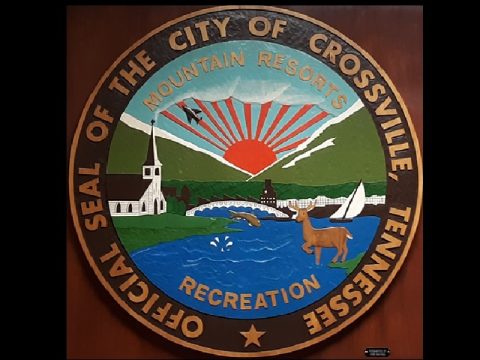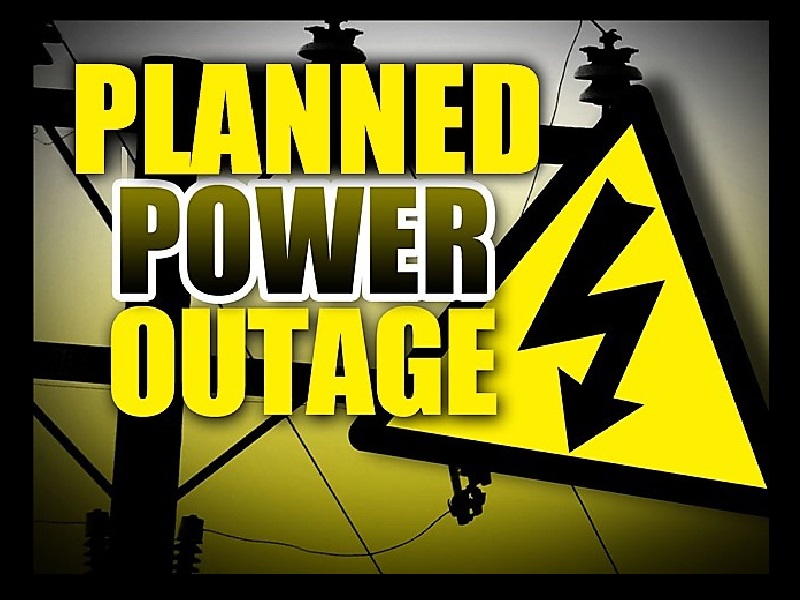CITY COUNCIL TO DISCUSS MOBILE HOME REGULATIONS
The Crossville City Council in their work session this upcoming Tuesday (April 6, 2021) will discuss mobile home regulations regarding individual placement, parks and mobile home subdivisions.
The following is what the council will review and possibly send to the regular scheduled meeting to be held April 13, 2021 for a vote:
14-401 DEFINITIONS
For the purpose of this chapter, the following definitions shall apply unless the context clearly indicates or requires a different meaning.
BUFFER STRIP – A strip of land along a property line reserved for screening purposes from adjoining properties or public right-of-way and planted with evergreen trees and/or shrubs in a manner as to provide screening and/or fencing of opaque wood or other material.
LOT – A piece, parcel or plot of land in one ownership, occupied or to be occupied by one principle building (including one mobile home) and its accessory buildings and including the open spaces required herein.
MOBILE HOME – A single-family factory manufactured dwelling, meeting HUD codes and T.C.A. 68-126-101 through 68-126-412, designed for transportation, after fabrication, on streets and highways on its own wheels or on flatbed or other trailers, and arriving at the site in one or more sections where it is to be occupied as a dwelling complete and ready for occupancy except for minor and incidental unpacking and assembly operation, location on jacks or permanent foundation, connection to utilities and the like.
MOBILE HOME PARK – A portion or parcel of land of at least one acre designed for or which is intended to be used to accommodate three or more mobile homes.
MOBILE HOME SUBDIVISIONS – A subdivision designed and intended for residential use where the residences are mobile homes rather than site-built homes.
SUBDIVISION – The division of a tract or parcel of land into two or more lots.
14-402 REGULATIONS FOR PLACEMENT OF MOBILE HOMES ON STANDARD LOT OR PARCEL.
(A) General. One mobile home may be placed on a lot or parcel that is not part of a mobile home park or mobile home subdivision under the following conditions:
(1) The mobile home is new or no more than ten years old;
(2) The mobile home may be single-wide or double wide;
(3) The mobile home is to be used as a residence, not as a business or storage unit;
(4) The mobile home is placed on a permanent perimeter block foundation built to city’s building codes;
(5) All applicable subdivision regulations, housing, building code provisions and all state and federal laws are complied with;
(6) Two mobile homes can be placed on the same lot or parcel; providing:
(a) The property has no site-built dwelling units on it; or
(b) The property is large enough to be treated as two separate lots (meeting all minimum lot size, width and setback requirements) and could be subdivided as such.
(7) If a parcel or lot has a site-built house on it and the owner can show extremely hardship or need due to age, illness and the like, one mobile home may be placed on the same lot or parcel, providing that the property is large enough to be treated as two separate lots (meeting all minimum lot size and setback requirements) and could be subdivided as such.
(B) Minimum lot sizes.
(1) Lot on city sewage system: minimum 6,000 square feet in area and 60 feet wide.
(2) Lot not on city sewage system: minimum 80 feet wide and 20,000 square feet in area, although greater area may be required by the environmentalist for private sewage disposal due to factors of drainage rock and soil conditions.
(C) Building setback lines.
(1) All attachments to the mobile home must also meet required setbacks.
(2) Frontage along street rights-of-way, including corner lots: 30 feet on minor street, 40 feet on collector street, 50 feet on arterial streets (unless a greater distance is deemed to be necessary by the Planning Commission for the protection of the contemplated development on the property).
(3) Minimum 20-foot separation from any other building on that lot or another lot.
(4) Side and rear setback: minimum 15 feet.
(5) Minimum 15 feet from any creek or drainage way.
(6) Other utilities (electric, gas, phone and the like) may have greater setback or easement requirements.
(D) Temporary permit for construction site. The Building Inspector may issue a temporary permit to allow occupancy of one or more mobile home(s) at a construction site to be used as an office or residence during the construction period. The property does not have to meet the usual lot size and setback requirements.
(E) Confinement. All other mobile homes occupied for living purposes shall be confined to mobile home parks, mobile home subdivisions and temporary occupancies as provided for above.
14-403 MOBILE HOME SUBDIVISIONS
Mobile home subdivisions and subdivisions developed to allow for mobile homes, modular units or double-wide mobile homes shall comply with all subdivision regulations as provided for in the current Crossville Planning Region Subdivision Regulations.
14-404 MOBILE HOME PARKS
(A) General.
(1) A mobile home park consists of a minimum of one acre, minimum three mobile homes and on city sewer.
(2) The mobile home park cannot be accessed through an existing residential subdivision, and must be accessed from a collector or arterial street, as designated by the Planning Commission, defined in the subdivision regulations and listed in Planning Commission minutes.
(3) The following requirements also apply to an addition to or modification of an existing nonconforming mobile home park.
(4) Developer will pay to the city same fees per lot as for subdivision plats.
(5) Each mobile home placed in the park must meet current HUD requirements and developer must obtain a building permit for each one placed in park.
(B) Application development plan, development process and final as-built development plan.
(1) The application development plan, drawn by surveyor at scale of one inch equals 100 feet or one inch equals 50 feet must include site location, tax map identification information, property boundary measurements, topography at five-foot contours, floodplain status, adjoining property owners’ names, adjoining structures, existing and proposed water lines and sewer lines as well as proposed location of electric and gas lines within the park, locations of fire hydrants, drainage plan showing existing or proposed drainage on-site and off-site, street lighting, internal roadways, size of
mobile home spaces, parking areas, recreation areas, garbage collection areas, existing and proposed buildings and other information that maybe required.
(2) Upon receipt of the application development plan, the city will post property with a sign that Planning Commission and City Council have this property under consideration; sign shall remain until development plan has been approved by City Council.
(3) The Planning Commission will review and recommend the application development plan to City Council, which will also review and approve the plan before any construction or development activities begin.
(4) Variances of any requirement and/or any changes in the application development plan must be reviewed and recommended by the Planning Commission and then approved by City Council. This includes any variance or change proposed during the development process.
(5) During the development process, the Building Inspector and representatives of city’s
Water, Sewer and Street Departments will monitor and inspect development of the mobile home park and report periodically to the Planning Commission and City Council. (6) When a mobile home park is developed in sections or stages, each section must consist of a minimum of ten spaces or 25% of total park, whichever is greater.
(7) The final as-built development plan must be submitted and approved by Planning
Commission before placement of any mobile home or occupancy of any mobile home. The Planning Commission will forward a report to City Council.
(8) Financial guarantee:
(a) In lieu of completion of the pavement of the internal private streets and/or landscaping prior to placement or occupancy, the Planning Commission may consider accepting from the developer an irrevocable letter of credit or cash escrow account for up to six months to guarantee completion.
(b) Landscaping of park and/or buffer strip may be covered if developer can show that weather/seasonal conditions have been the cause.
(c) Drainage and erosion control must be completed before applying for permission to post a financial guarantee.
(d) The Planning Commission will consider a developer’s paving contract amount or
landscaping costs, but may add an extra 10% to 20% as needed for contingencies and to offset any negative impact of road work on drainage, erosion control, utilities and the like.
(e) Upon completion of work, approval of all improvements and submission of the final as built development plan, the Planning Commission will consider release of the letter of credit or escrow account.
(C) Utilities.
(1) Internal water lines, minimum six-inch size, connected to city system, installed by the developer per engineer-designed water line plans approved by city and state, and construction inspected and approved by city. The lines shall be within dedicated easements, with location and size acceptable to city.
(2) Each mobile home space has a separate water meter/tap, unless variance has been approved by city.
(3) The mobile home park must be connected to city sewer system, unless an engineer designed alternative system approved by state and city.
(4) Internal gravity sewer collection lines shall be installed by the developer per engineer designed sewer lines plans approved by city and state, and construction inspected and approved by city. The lines shall be within a dedicated easement, with location and size acceptable to city.
(5) Fire hydrant(s) shall be located within 500 feet of any mobile home, service building or any other structure within the mobile home park.
(6) Development plans should also show the location of natural gas lines and electric lines within park.
(D) Roadways, driveways, drainage, parking and lighting.
(1) The mobile home park must front on a city-maintained or state-maintained collector or arterial street.
(2) Roadways within a mobile home park are to be constructed and maintained by owner/developer, paved minimum 22 feet wide with hard surface tar-chip, asphalt or concrete. Construction of roadways and drainage will be inspected and approved by city. If on-street parking areas are planned, greater roadway width is required.
(3) Drainage plan for the mobile home park must consider drainage on-site and off-site, including ditches, underground culverts, roadway-driveway drainage and drainage retention.
(4) Along each side of roadway pavement there will be utility drainage easement strips minimum ten feet wide, unless city determines wider easements are needed, with easements not part of front yard setback area.
(5) Each mobile home space has minimum of two paved parking spaces and paved driveway from roadway.
(6) Visitor and/or service paved parking of one space per four units in common areas. Developer may utilize special design for on-street parking areas.
(7) Adequate lighting of mobile home spaces and common areas shall be installed and maintained by owner/developer.
(E) Mobile home spaces.
(1) No mobile home nor mobile home space can be located in a floodplain.
(2) Only one mobile home per space.
(3) The minimum width of mobile home space is 50 feet for single-wide and 75 feet for doublewide.
(4) The minimum length of mobile home space is 100 feet for units up to 70 feet long. A unit over 70 feet long requires the space be 35 feet longer than the unit.
(5) In general, all setbacks are 15 feet with the following stipulations and exceptions.
(a) Attachments to the mobile home (porch, steps, deck, carport and the like) cannot be located within the setback area.
(b) The mobile home may be positioned on its space so that setback on one side is no less than ten feet, with other side being 20 feet or wider, to be used for paved parking spaces, porch or deck, storage shed and/or garage or carport.
(c) Along the planted buffer strip, the setback can be reduced to ten feet.
(d) A mobile home must be minimum 30 feet from any city street or state highway right-of-way.
(e) Includes 15 feet setback from creeks or drainage-ways.
(6) Each space must be landscaped and planted with grass and shrubs before occupancy to control erosion.
(7) Each mobile home space shall abut a paved driveway or roadway with unobstructed
access to an open developed approved public street.
(F) Buffer strip and fencing.
(1) Each mobile home park must have a planted and/or fenced buffer strip 20 feet wide along all property lines of the park (except across driveways and streets). Fencing must be opaque wood privacy design six feet high. Acceptable buffer strip plantings would consist of fast-growing evergreens planted in double rows staggered and four feet to five feet tall at time of planting. Existing vegetation may be preserved for buffer strip.
(2) The buffer strip is not part of any mobile home space or setback area.
(3) A floodplain area may be used as the buffer strip.
(4) When existing adjoining house and other land uses are located close to proposed development or whenever necessary, the Planning Commission or City Council may require opaque wood or other material privacy fencing properly maintained in addition to the landscaped buffer.
(G) Refuse collection, recreation-common areas, other buildings.
(1) The mobile home park must provide acceptable refuse collection stands and/or containers per space, and/or an accessible enclosed dumpster location, properly maintained and managed so that no health hazards, rodent harborage or insect breeding problems are created.
(2) Recreation common area(s) must be provided centrally located, free of traffic, easily accessible, minimum 4,000 square feet or 400 square feet per mobile home, whichever is greater.
(3) Specific recreation equipment such as picnic tables, grills, swings, slides, benches are not required, but if provided should be properly maintained in convenient lighted accessible locations. A swimming pool must be fenced, lighted and properly maintained.
(4) Other buildings that are not required but may be provided by the park owner/developer include park manager’s office, laundry facilities, indoor recreation, enclosed storage, all of which should be properly maintained, located in convenient lighted accessible locations with off-street parking, and connected to rest of mobile home park with walkways.
14-405 BUILDING PERMIT
Persons placing a mobile home on any lot shall obtain a building permit from the City Building Inspector. A temporary permit as provided for in § 14-402(D) shall be obtained or renewed at a cost of $30 every six months. When city sewer is not available, an approved septic tank must be installed before mobile home is attached to the city water system and new or relocated mobile homes shall have separate water meters.
14-406 NON-RESIDENTIAL FACTORY MANUFACTURED STRUCTURES
Factory manufactured structures used for commercial, educational, religious, assembly, banking, office or other purposes must be new or no more than ten years old when placed on the property, and meet Standard Building Code per State Modular Building Law found in T.C.A. 68-126-301 through 68-126-320. A mobile home meeting HUD standards cannot be used for these purposes.
14-407 ENFORCEMENT OF REGULATIONS
The Building Inspector and the City Planning Commission are designated to enforce regulations in this chapter. In addition, the Planning Commission is designated to review and recommend to City Council any request to vary from any of the regulations in this chapter. The City Council will hold a public hearing on any variance request and has final authority to approve any variance. Whenever there is a discrepancy between minimum standards or dimensions noted herein and those contained in other official regulations, the highest standard shall apply.
14-408 VIOLATIONS
The violation of any part of this chapter is hereby declared to be a misdemeanor and upon conviction of any person for the violation, he, she, or they are to be fined according to the general penalty provision of this code of ordinances. Each subsequent day that any violation continues unabated shall constitute a separate offense.





